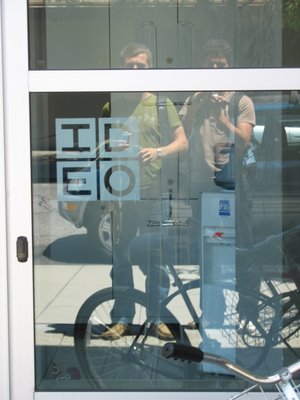
I suppose this is what happens when you are working as a consultant for free and the person paying the bills stays quiet until the end of the project. You can’t go wrong, or rather everything seems to go right.
Kiva is an organization that is understaffed and underfunded as many non profits are. They have a to-do list a mile long and the prioritization seems to shift depending on where the fire breaks out. Fortunately Jon and I had some fireworks and were able to draw plenty of attention to ourselves while here and we got the entire Kiva crew locked down for a day long into(context) extravaganza. There were 6 Kivans and 2 interns present.
We confirmed our suspicion that the blog is an excellent design tool for communicating the results of design research by providing a connection between the context research team, the design group as well as the client. In our case we represent the first two teams. The Kiva members present had been following us since we arrived in East Africa and they were familiar with both our approach and some of our initial findings. The result was informed questions and an obvious involvement. They were familiar with quite a lot of the details that we would highlight in the presentation and it left us to concentrate on weaving those elements together to create a cohesive whole and justify our conclusions.
We set things up so that the first half of the day was a pretty much a “sit and listen.” There was quite a bit of material to go through and for us the difficulty was to narrow it all down, as almost all of it is of interest to Kiva. Jon had the presentation running of his computer and midway it went on standby and shut down so we got to have a very fitting East Africa electricity failure moment. Before we broke for lunch we covered our final conclusions. This took the shape of a set of briefs for designing an appropriate solution for the MFI’s.
We decided that with the amount of time that we have with Kiva our best bet was to present those ideas that we had been steadily creating over the past few weeks rather than start from scratch with brainstorming. The briefs were reiterated after lunch and helped the Kiva crew to critique the ideas that we presented. As hoped they helped to create a set of principles for designing an “appropriate” technology solution. Our ideas built upon or confirmed points raised in the ongoing dialog that occurs at the Kiva office and the briefs, as well as limited Kiva capacity, helped us to quickly decide on which ideas to pursue. I was particularly happy to see Jeremy defend the choice of one idea over another by using the briefs list that was projected on the wall during our discussion.
We were very much on the same page with Kiva and quickly nailed down a plan of attack for the month. Jon and I can use our time to develop a Kiva manual while the Kiva staff creates the software to support the idea of a Kiva Miracle Mobile Solution (Kiva MMS). This will be a mobile based journal updating solution for the credit officers who operate in the field with the beneficiaries. Together they may take the form of a mail out kit that can be delivered to the individual MFIs.
After the presentation we got some nice feedback on the critical side as well as the celebratory side. Whether he was joking or not CEO “Matt Flannery” tagged our presentation as “unimprovable” and said “guys before you realize someone (at Kiva) will work overnight and develop (programming) those ideas”
By the way
intocontext website has been updated with the
context research results have a look!


